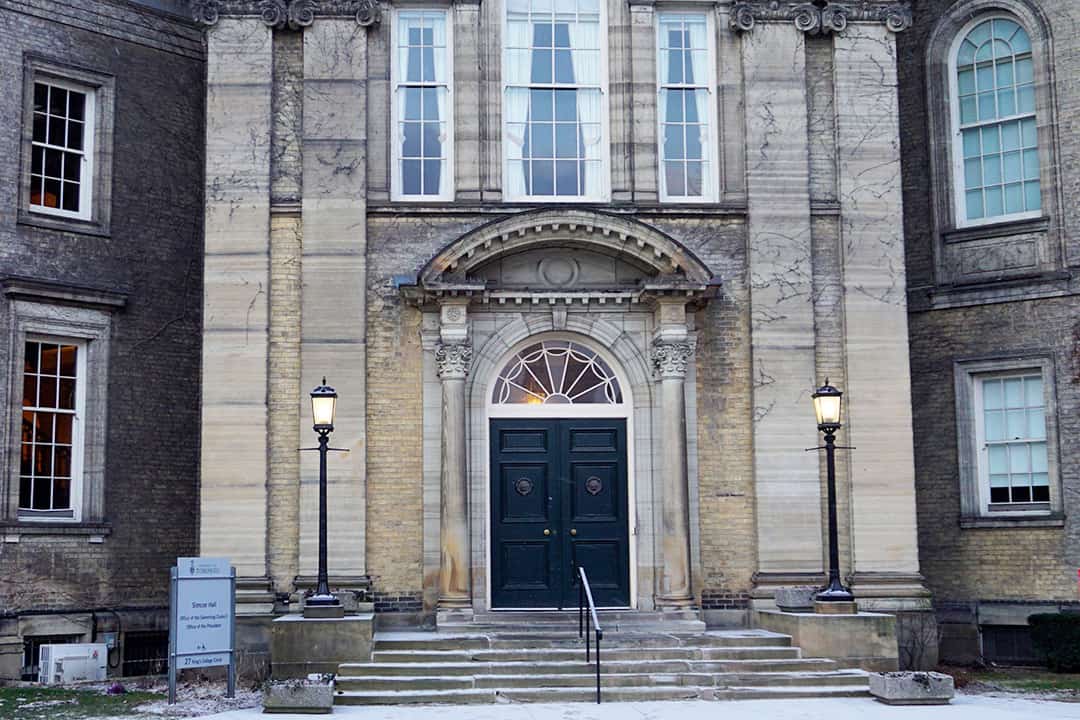On March 13, the University of Toronto announced a mass cancellation of in-person classes across all three campuses, effective from March 16 to April 3 — the last day of classes — moving to alternative forms of delivery of classes, including online. This is applicable to all undergraduate classes and research-based graduate programs, though professional programs decide independently about class structure moving forward.
The decision, as with all major elements of U of T’s COVID-19 strategy, came after consultations with the heads of major U of T faculties, as well as the Provost’s Academic Continuity team. Dean’s offices across various faculties were also informed in advance of the mass notice via conference call. As a result, the announcement did not come as a surprise to various members of the administration, although it may have been startling for some students.
Vice-President & Provost Cheryl Regehr and Vice-President Research & Innovation, and Strategic Initiatives Vivek Goel are leading U of T’s response to the COVID-19 outbreak. Notably, Goel also serves as a professor at the Institute of Health Policy, Management and Evaluation at the Dalla Lana School of Public Health. The administrative offices to whom The Varsity reached out lauded the two for their management of the COVID-19 response, as well as their determination to make the best decisions for U of T students.
In an email to The Varsity, a member of administration in the Faculty of Music emphasized that due to the urgency and rapidly evolving nature of the situation, internal communication took place with a “very tight turnaround,” but it did indeed take place. “Know that administrative zeal and corporate complexification sometimes seems to leave some constituencies in lag (including students, support staff, part-time teachers, public stakeholders). However, in the present situation, everyone is really trying to do the best we can,” they wrote.
“The university administration has been outstanding in monitoring the COVID-19 situation and advising departments on developments,” a statement from the English department read. “We were able to advise all instructors on various contingency plans initially as early as last Friday and more fully this Monday.”
A member of the John H. Daniels Faculty of Architecture, Landscape, and Design noted an underlying sense of solidarity in U of T’s response: “We are all trying to manage a quickly evolving situation and set of circumstances… We all share the goal of trying to ensure the health and safety of our whole community, while maintaining our responsibilities and commitments to the education and welfare of our students.”
The decision to cancel in-person classes followed a March 9 open letter released by the University of Toronto Faculty Association, directed to the Office of the Vice-President and Provost. The letter urged a special meeting of the Joint Committee for the purpose of discussing a response to the outbreak. The Joint Committee is outlined in Article 12 of the university’s memorandum of agreement with the faculty association as consisting of “not fewer than four (4) representatives of the Association and not fewer than four (4) representatives of the University of Toronto Administration,” and can be convened with a seven days’ written notice. Two days later, on March 11, the Office of the Vice-President and Provost posted a memo mandating that course instructors each develop a strategy for delivering courses, in case in-person classes were no longer possible.
“We will ask instructors to walk toward that plan as slowly as we can and as fast as we need to,” the memo read. That same day, the World Health Organization declared the outbreak of COVID-19 a pandemic.


